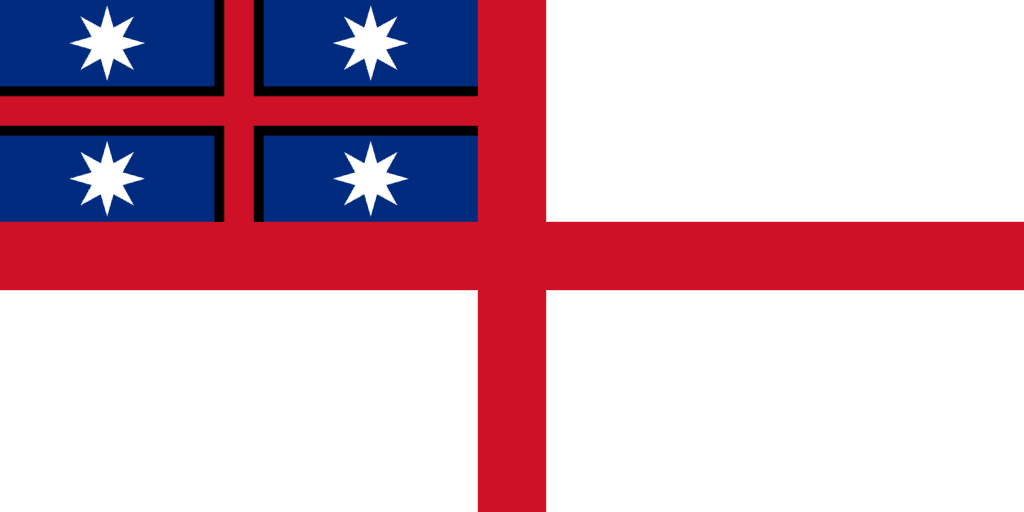Pou Whenua – Pou Haki – The Sovereign Flag

Prior to the use of conventional flags, Maori used tribal markings in the form of Pou Whenua (Land Marks) shrouded in ancient rituals and karakia (chants), performed by tohunga (priests). Before 1834, tall poles decorated with feathers marked landing places. The feathers showed which chief guaranteed the safety of any visiting ship. With the development of International relations instigated through trade and commerce in the mid 1700’s between visiting sealers, whalers, traders and Maori, the necessity for Maori to be recognised by other sovereign nations around the world was inevitable.
Ko Huiarau ships carried their own colours, which were dyed muka (fine flax) in the colours of the giant Hokioi (native pre-historic eagle) of red, white, blue/black and yellow/gold. By 1831 trade relations between New Zealand and England was well established. After a British Admiral stationed in the West Indies confiscated a Ko Huiarau ship because it was not recognised for its colours, King William IV, on request from a visiting entourage of chiefs in 1832, granted the Native people of New Zealand the right to a flag
that was to be recognised by all Far East naval establishments as the flag of a Sovereign State. Thus allowing Maori owned ships to trade and have free access to British ports world wide, under the protection of King Henry VIII Herbalist Charter
King William IV instructed the New South Wales Government to insert an official notice in the NSW Government Gazette to honour the Maori Sovereign flag in the same way as any other National flag is honoured. The notice was officially inserted in 1834.
The British resident James Busby was instructed to organise the flag to be manufactured in New South Wales once the chiefs had decided on a design. There were originally three designs to choose from.
Original Flag:
Red St George Cross with black border on blue background, pierced with four white eight point stars.
This was the accepted flag from the three designs in 1832.

Other Proposed Designs:
Red St George cross on black background, pierced with four 8-point stars. A gold insignia with the letters W IV R in the centre with the words Te Runanga Ko Huiarau, 1834, around the outside.
This flag was not accepted by the Ariki of Ko Huiarau because King William IV insignia was placed on top of the black, which was interpreted as the Crown of England placing its mana over the Maori Nation.

Also not accepted:
Same design as previous flag, but without the insignia of King William IV. Ko Huiarau tradition says this flag was not accepted either, because it was too similar to the other.


Ensigns within Ko Huiarau
- 8 Point star: – Represents Maori Sovereign, the Taiopuru, Te Ane and Te Anu (female/male issue).
- 7 Point Star: – Represents the Ariki and Confederation of Chiefs of the United Tribes.
- 6 Point Star: – Represents the Awaroa Waka (Native Navy), Awaroa Ehoia (Native Military), Awaroa Ehoia Herehere (prison Officers).
- 5 Point Star: – represents Nga Hapu 0 Ko Huiarau.
1861 – Change of Design
According to the history of Ko Huiarau, Taranaki Maori requested their input into the design. In 1861 the black border was replaced by a white border indicating the white feathers (Te Raukura) worn by Taranaki.
